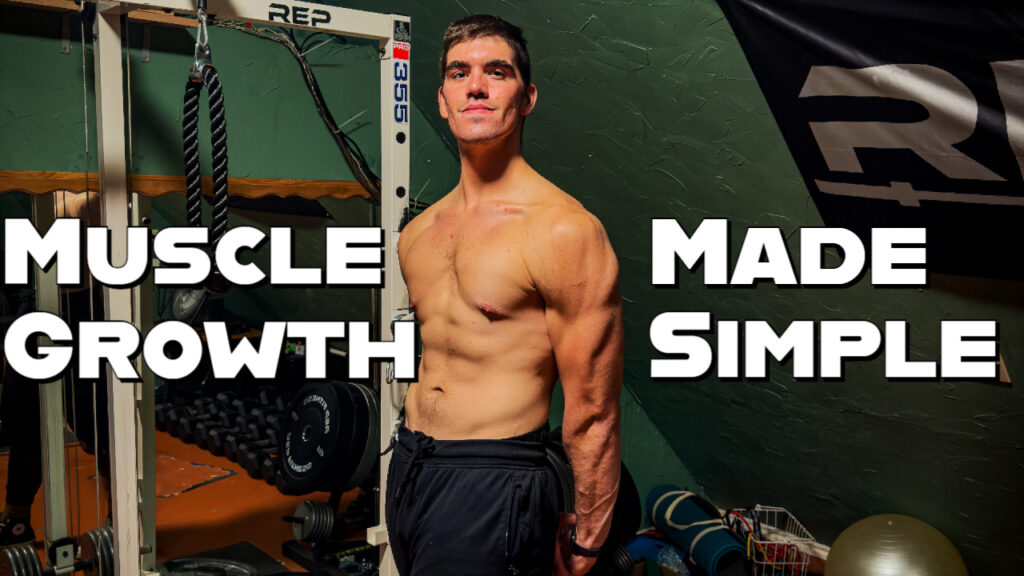Muscle allows us to do every action of our day, going upstairs, doing the dishes, and walking everywhere we go. Unfortunately, muscle fibers and strength have been shown to decrease as we age and remain inactive. Fortunately, by applying physiological principles every person can make the most of what they have to achieve their health goals
Specific Adaptation to Imposed Demand (SAID Principle)
- Volume is the driver of hypertrophy
- Volume = sets x reps x weight.
- Repetitions
- Aim for three sets with 5-12 repetitions at a weight you could only do for one or two extra reps when the set is complete.
- Sets
- Aim for 10-30 sets per muscle each week
- Weight
- Aim to complete each set so that to do another repetition once the set is completed would mean you would struggle and possibly compromise form. This would be RPE 9/10 and is very difficult. This is the mindset you should train with because RPE 4/10 where you could do another 6 repetitions may not provide a sufficient reason for your body to adapt. Most volume should be done RPE 6-9 to be effective.
- If the intensity is too easy the demand will not be sufficient to signal for growth.
- Frequency
- Borde et al found that 2–3x week per muscle group, can provide a sufficient stimulus for hypertrophy.
Muscle-building Principles
- 2-3 days per week 5-12 repetitions with 2-3 sets per exercise.
- Progressive Overload
- Increase weight slowly especially if you are new to exercise. Focus on learning correct movement patterns before loading them.
- add 5-10 pounds each week you lift, and keep a log of sets, reps, and weights so you can see the progression. This is because overload will drive adaptation.
- Prioritize multijoint exercise
-
- Squat variations, Pulling variations, Pushing variations.
- Can use bodyweight, machine, barbell, or dumbbell for all three of these movement patterns.
- The most bang for your buck because you get to work many muscles at the same time.
- Squat variations, Pulling variations, Pushing variations.
-
Health
- There is an inverse relationship between inflammation and c-reactive protein and physical activity. It is possible this is mediated by skeletal muscle mass.
- Increased muscle mass can reduce all-cause mortality and reduce the risk of frailty.
Aging & Strength
- Muscle mass decreases 1-1.4% each year after 30.
- This can lead to sarcopenia which is age-related muscle loss
- An 85-year-old weight lifter demonstrated similar power to the 65-year-old control suggesting a 20-year advantage with long-term resistance training
- By training to lengthen your health span, you may prevent becoming frail which has been associated with increased all-cause mortality
Nutrition
- Aim to consume 1 gram of protein per pound of body weight to support muscle growth. This is because your muscles are made out of amino acids that sustain muscle.
- The RDA from the FDA is 8g/kg which in my opinion, is low for healthy adults. Consult your doctor before changing your diet.
Sleep
- Muscle is built while you are sleeping and not while you’re in the gym.
- Why is sleep so important?
- When you sleep your hormone environment is anabolic because cortisol decreases and growth hormone increases.
- When you lift weights you actually damage your muscle tissue and flag it for repair during sleep.
MY KEY LINKS:
- 💡 YouTube – https://www.youtube.com/@cartergansky
- 📸 Instagram – https://www.instagram.com/carter.r.gansky/
- 🐦 Twitter – https://twitter.com/CarterGansky
- 🌲 Linktree – https://linktr.ee/cartergansky
- 🔊 Discord – https://discord.gg/sQxvHH78Ga
- 🧠 Check out MyProtein with code CARTER-RQC
WHO AM I:
I’m Carter Gansky, a fitness and health advocate and a Doctor of Physical Therapy in training. I explore the strategies and tools that help us live motivating, healthier, and more fulfilling lives.
GET IN TOUCH:
🧠 contactcartergansky@gmail.com
For collaborations or other business inquiries.
References:
Stark M, Lukaszuk J, Prawitz A, Salacinski A. Protein timing and its effects on muscular hypertrophy and strength in individuals engaged in weight-training. J Int Soc Sports Nutr. 2012 Dec 14;9(1):54. DOI: 10.1186/1550-2783-9-54. PMID: 23241341; PMCID: PMC3529694.
Haff, Greg, and N. Travis Triplett. Essentials of Strength Training and Conditioning. Fourth edition. Champaign, IL, Human Kinetics, 2016.
Orssatto, Lucas B.R., et al. “Is power training effective to produce muscle hypertrophy in older adults? A systematic review and meta-analysis.” Applied Physiology, Nutrition, and Metabolism, vol. 45, no. 9, Sept. 2020, pp. 1031+. Gale OneFile: Health and Medicine, link.gale.com/apps/doc/A635670825/HRCA?u=googlescholar&sid=googleScholar&xid=9fe3b82f. Accessed 13 May 2023.




Pingback: How to Train for a Half Marathon - Carter Gansky